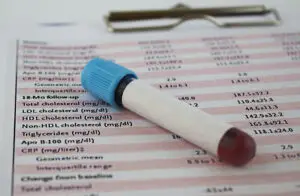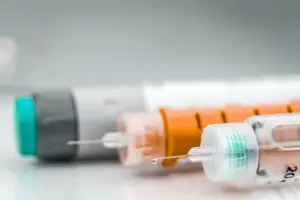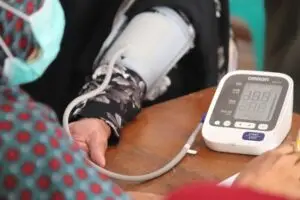The WHF Roadmap for Hypertension – A 2021 Update identifies roadblocks and suggests potential solutions to improve cardiovascular health and help reach the target set out in the Sustainable Development Goals: achieve a 30% reduction in NCDs, including CVD, by 2030.
A Roadmap is a framework to identify roadblocks and suggest potential solutions on the road to 2030. Global Roadmaps have been developed by worldwide experts to detect the problems and offer solutions on specific topics impacting cardiovascular mortality.
The first Roadmap for the management of raised blood pressure was launched on 8th May 2015 at the WHO World Health Assembly, and published in Global Heart. In 2021, WHF published an updated edition of the Roadmap, also published in Global Heart.
Background
In 2015, the World Heart Federation published its first Roadmap on raised blood pressure. Since then, advances in hypertension have included the publication a new clinical guidelines (AHA/ACC; ESC; ESH/ISH); the launch of the WHO Global HEARTS Initiative in 2016 and the associated Resolve to Save Lives (RTSL) initiative in 2017; the inclusion of single-pill combinations on the WHO Essential Medicines’ list as well as various advances in technology, in particular telemedicine and mobile health. Given the substantial benefit accrued from effective interventions in the management of hypertension and their potential for scalability in low and middle-income countries (LMICs), the WHF has now revisited and updated the ‘Roadmap for raised BP’ as ‘Roadmap for hypertension’ by incorporating new developments in science and policy. Even though cost-effective lifestyle and medical interventions to prevent and manage hypertension exist, uptake is still low, particularly in resource-poor areas. This Roadmap examined the roadblocks pertaining to both the demand side (demographic and socio-economic factors, knowledge and beliefs, social relations, norms, and traditions) and the supply side (health systems resources and processes) along the patient pathway to propose a range of possible solutions to overcoming them.
Those include the development of population-wide prevention and control programmes; the implementation of opportunistic screening and of out-of-office blood pressure measurements; the strengthening of primary care and a greater focus on task sharing and team-based care; the delivery of people-centred care and stronger patient and carer education; the facilitation of adherence to treatment and an improved medication supply management as well as support for the use of novel technologies.
Overview
The new World Heart Federation Roadmap for Hypertension, which builds on the previous 2015 edition, is a key reference document for anyone involved in the planning, organization, patient management and implementation of approaches to reduce the burden of hypertension.
It provides evidence-informed guidance on priority interventions for hypertension that can be adapted to different contexts, and summarises new evidence in epidemiology, treatment, emerging technologies, health system strategies, and policies that can inform, support and improve the detection and management of hypertension worldwide.
Drawing on the expertise of clinicians, researchers, allied health professionals, health systems experts and patient representatives from around the world, it presents an integrated approach to patient care.
Challenges
A key challenge in effective raised blood pressure control is that most hypertensive individuals are usually asymptomatic for years prior to a significant cardiovascular event, but face an increased risk of stroke, heart attacks, and kidney disease. Raised blood pressure is one of the most frequent reasons for consultation in primary care and, left untreated, can lead to a range of complications including myocardial infarction, stroke, heart failure, renal failure and death. Despite international efforts to control the disease, its prevalence continues to rise, increasing from 600 million in 1980 to 1.3 billion in 2019.
Target
A relative reduction of the prevalence of raised blood pressure by 30 percent by 2030.
Definition
According to the Global Burden of Disease, ischemic heart disease is one of the biggest causes of morbidity and mortality across the world. Annually, there are over 18 million deaths due to cardiovascular disease worldwide, of which 9.96 million are attributed to raised blood pressure. Complications of raised blood pressure account for 53% of all heart disease and stroke related deaths. Blood pressure has a continuous relationship with the incidence of stroke, myocardial infarction, heart failure, peripheral artery disease, and end stage renal disease. Trials show that lowering blood pressure reduces the risk of subsequent cardiovascular events, including a 35-40% reduction in the risk of stroke and a 20-25% reduction in the risk of myocardial infarction. Raised blood pressure is either defined as blood pressure at or over 140 mmHg systolic or 90 mmHg diastolic or as receiving drug therapy for raised BP regardless which are their blood pressure values. Individuals considered to have “high normal” BP are defined as those with a systolic BP between 130-139 mmHg &/or diastolic BP between 80 and 89 mmHg.
Patient Story
“Finding out I had hypertension was a shock. I’d always thought I was fairly healthy for my age, and put anything out of the ordinary down to simply getting older.
My diagnosis was completely accidental. I thought I had an eye infection and had called my optician to cancel my annual eye test because of it. He insisted I came in, took a look and told me that it wasn’t an infection… it was burst blood vessels caused by high blood pressure. I called my doctor, had a blood pressure test straight away and was told that I had hypertension. It turned out that my cholesterol was also very high and the doctor said I could have a heart attack or stroke at any point.
My doctor prescribed some medications and told me to lose weight, get more active and eat healthily. In a few months I’d managed to lose around 5kg through diet and gentle exercise but my blood pressure and cholesterol were still too high. I bought myself a monitor so that I could keep track of what was helping to lower my blood pressure. The answer was exercise. I joined a gym and now, five year later, I’ve managed to get my blood pressure and cholesterol levels under control. If I stop exercising I know that my blood pressure goes up, so I’m determined to carry on so that my medicines can be kept at a low dose.
The fact that I’m still here and feeling better than before is all thanks to my optician for insisting on that eye test.”














